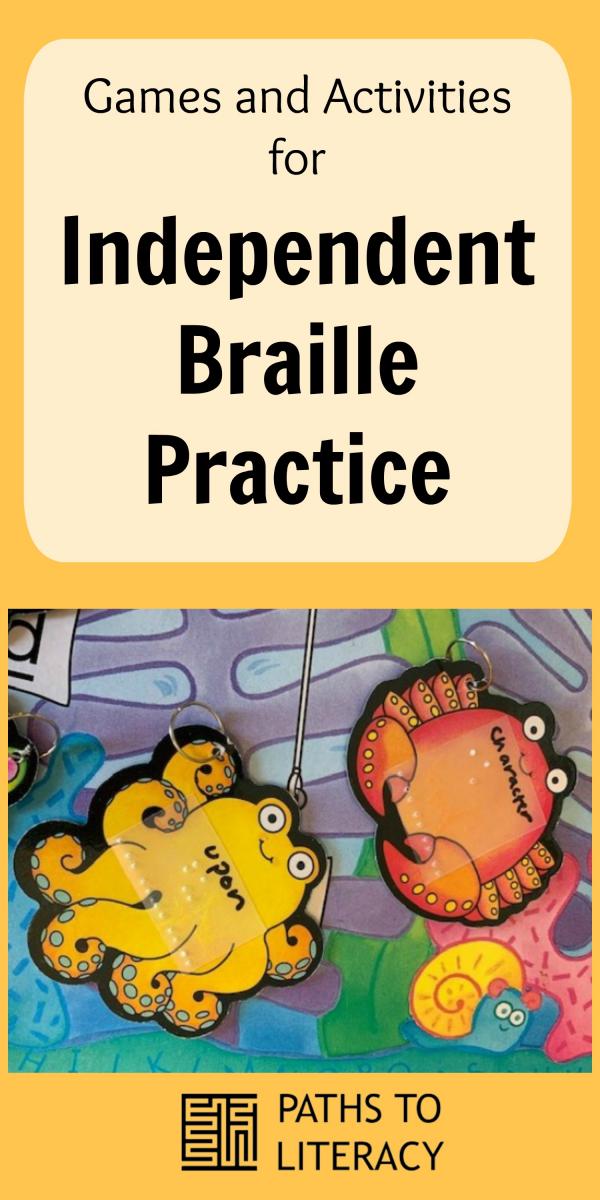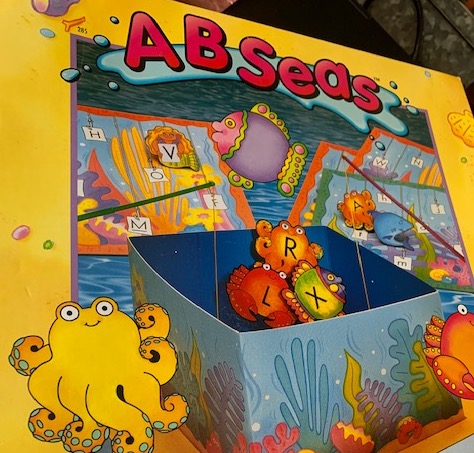Games and Activities for Independent Braille Practice
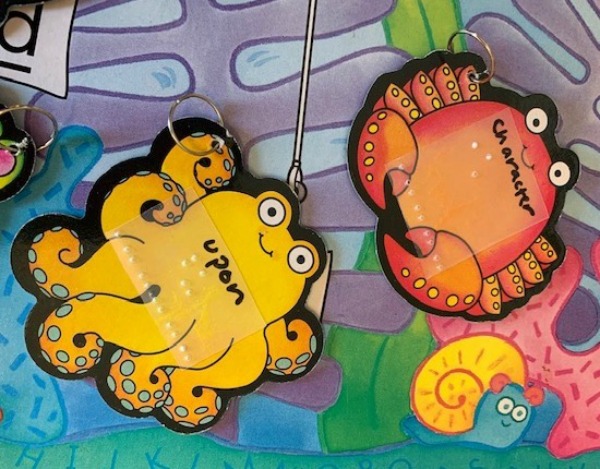
My son Liam (deafblind) is now in fifth grade and attends public school in a mainstream classroom. Most of his spelling work and braille work is taught integrated within the subjects of reading, writing and math. Sometimes, additional specific braille work or spelling work is necessary. Below I share three ways that I created independent activities that are quick and fun for Liam. They were nice to have when we only had a few minutes to work on something or he was getting restless.
Each of these activity ideas can be used to work on a range of skills (letter identification, whole words, specific contractions, etc.). They can be done with a group of students, as a game, or individually.
Contraction Fishing!
Materials:
- Discovery Toys AB SEAS Alphabet Letters Magnetic Fishing Game
- Black or white paper for contrast, if needed
- Cards with braille words on them
- Label paper with the matching contractions
Procedure:
I was given this AB Seas fishing game. It is a game for print readers to match capital letters with lower case letters. I ignored the print letters on the cards. I decided to use the game for some contraction practice for some braille contractions that Liam was struggling with. I wrote the whole word out on little cards and then, with braille label paper, I put the matching contraction on one of the little fish.
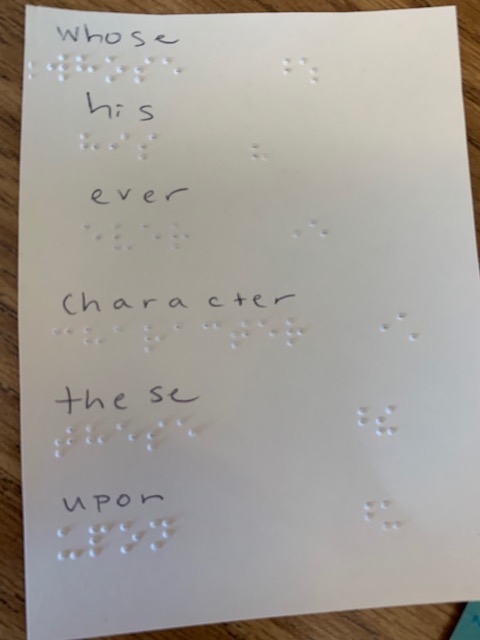
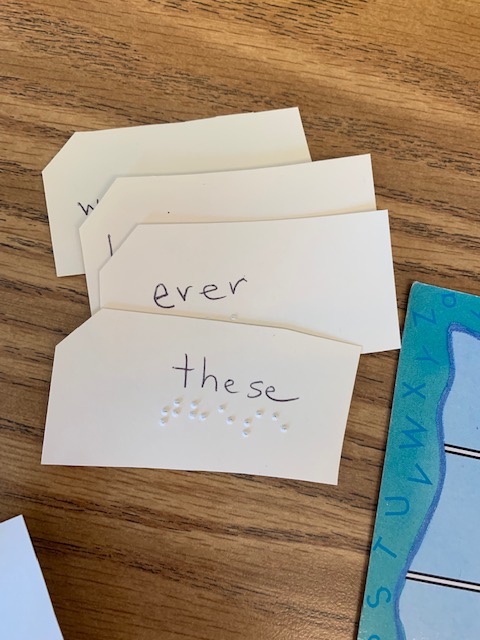
I started by giving Liam only 5 fish to choose from. I placed them on black construction paper as a contrasting background. I would give him one card with a word. He would search the "fish" to find the correct contraction to match the card. Then he would try to catch that fish with the magnet fishing pole. He loved it! It is a great way to quickly practice a specific skill and to break up the time, if your student seems fidgety or tired. The labels come off easily, so it can be used for other purposes when finished.
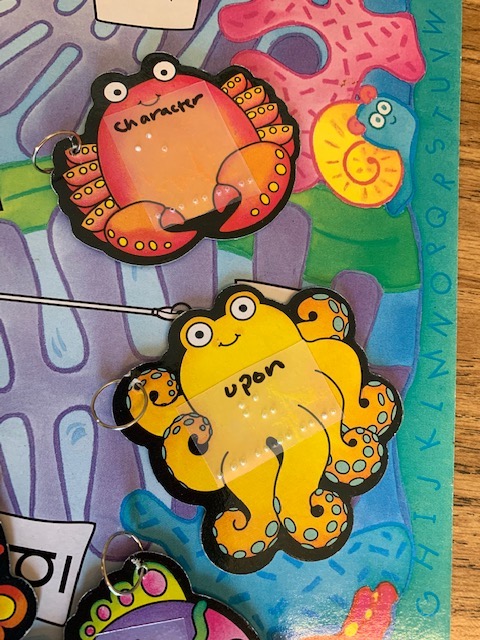
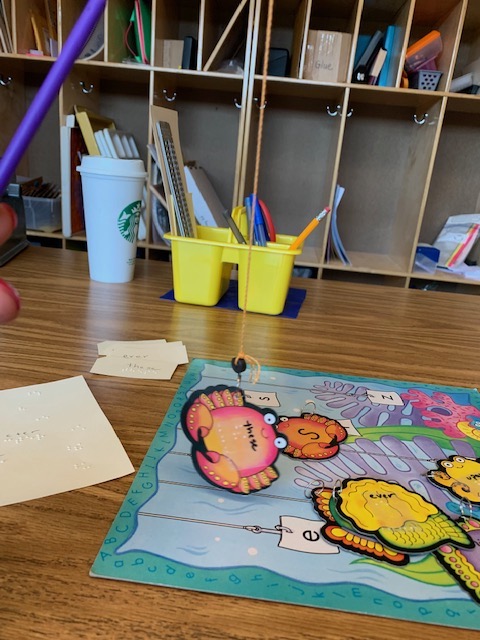
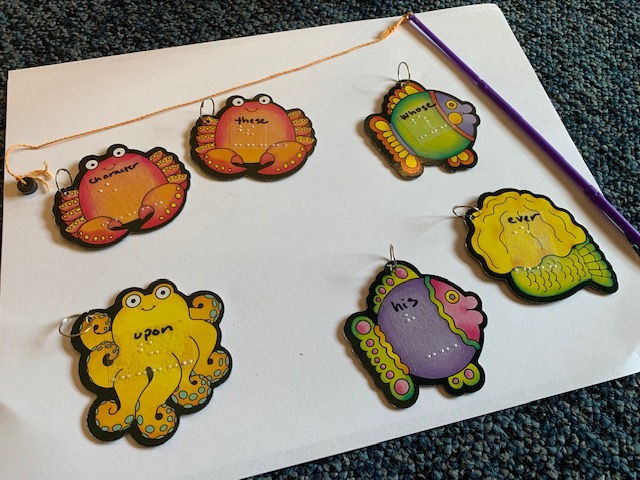
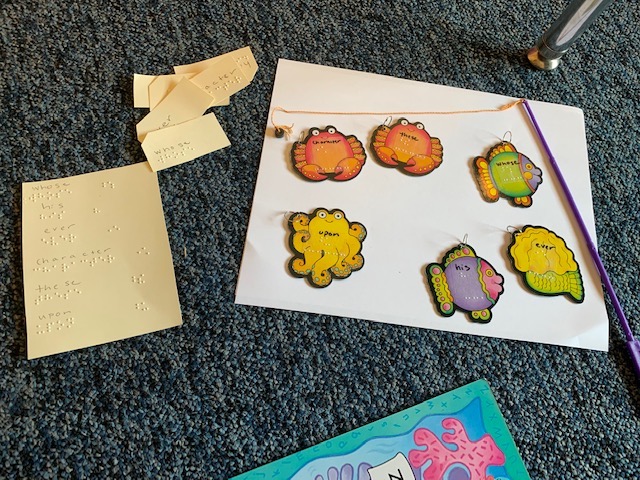
Puzzle Words
Materials:
- Puzzle pieces (This is similar to what I used.)
- Braille labels
Procedure:
These puzzles can be used for any activity that involves matching. I just ignored the pictures and words that were already written on the cards (although if your student needed work on those skills all you would need to do is add braille!). I put the whole word on one side of the puzzle and the contraction for the word on the other piece. Liam loved finding the matches! I started by laying out all of the full words on the table. I would give him one "contraction" piece at a time to find the match.
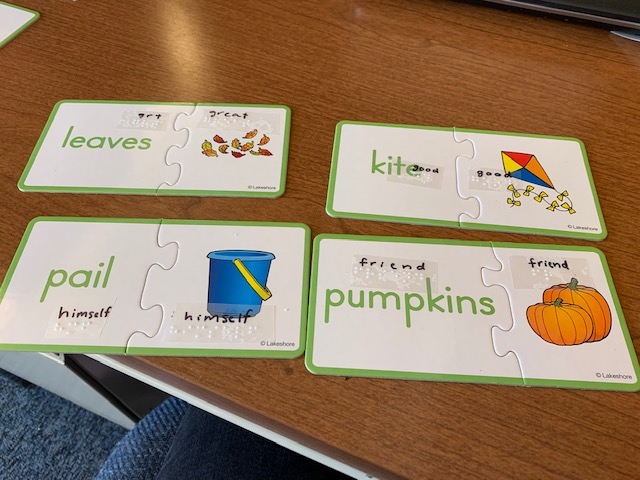
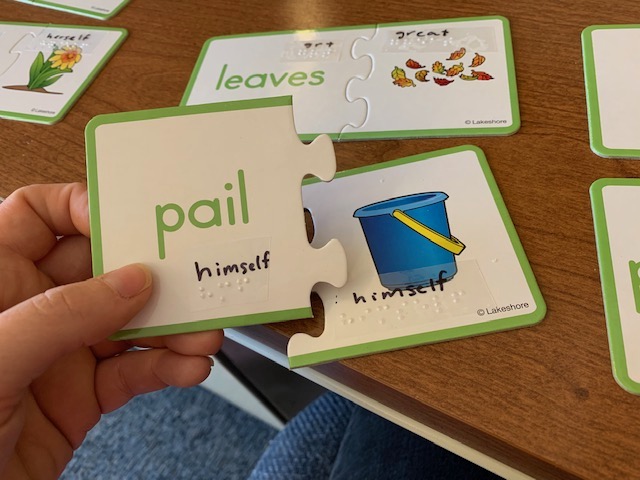
Pushpin Matching Game
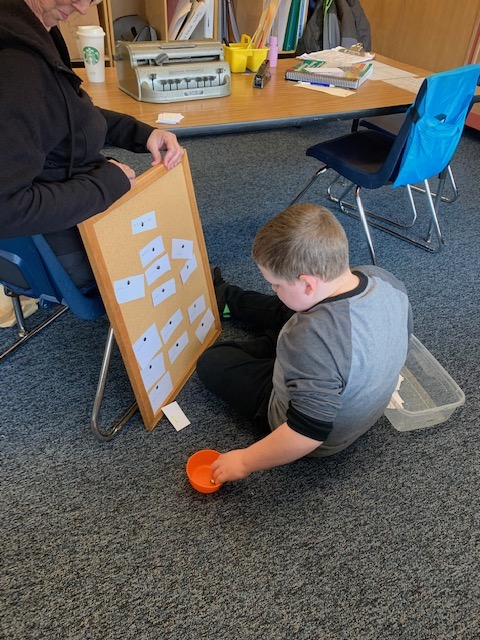
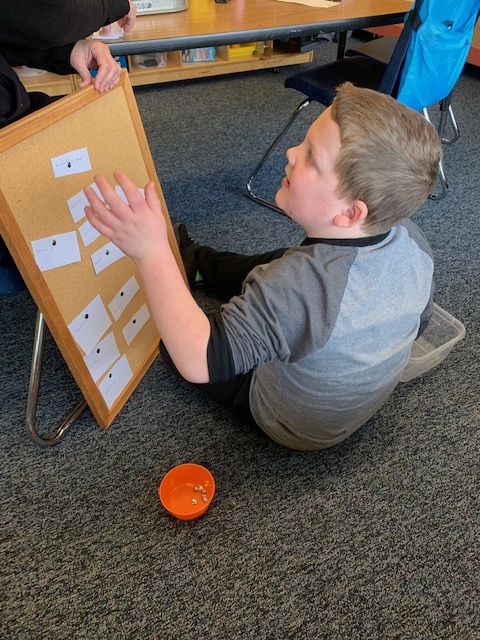
Materials:
- Large or small cork board
- Pushpins
- Braille words on cards
- Container to put the pins in
- Container to put the matches in
Procedure:
This activity was a great way to get Liam out of his seat. He chose to sit on the floor. Liam has weekly spelling tests that all of the fifth graders take. This week happened to be print contractions that of course included braille contractions as well! Some of the words included shouldn't, doesn't, wouldn't.
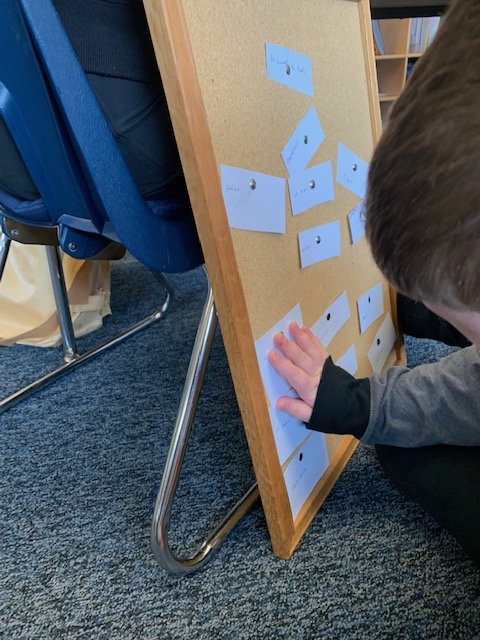
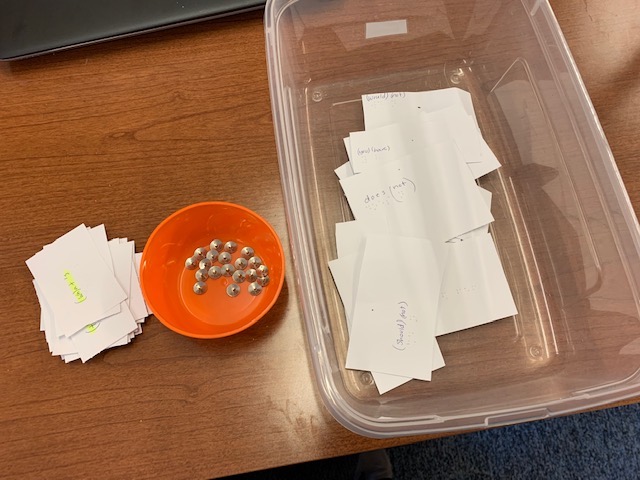
This game is similar to the others, in that he had to match the word with the contraction, but in a different format to make it fun. This activity can be used to support a variety of objectives.
Other ideas for worksheets and independent work tasks:
